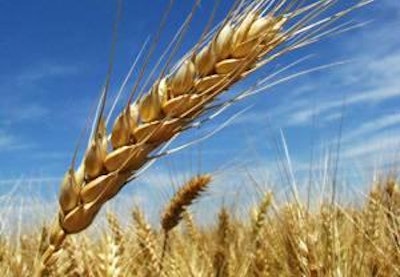
Feed cost remains the largest portion of poultry production costs. To control feed cost, poultry nutritionists continue to look for alternative feedstuffs. Traditionally, when there is a reduced supply or increase in the price of one feed ingredient (as with maize or corn), nutritionists seek alternative sources of energy and nutrients.
Many believe that all the feed problems created by the use of a substantial amount of the U.S. corn supply for ethanol production will be solved with the feeding of distiller's dried grains with solubles (DDGS). However, DDGS does not directly replace corn in a poultry diet and has other constraints, such as price, handling/logistics in feed mill and nutrient variation, which limit its use. Even with these constraints, DDGS is an acceptable feed ingredient that can be used successfully in poultry diets to reduce costs.
Increased government pressure for biofuels has led to a significant increase in biodiesel production resulting in increased cost for fat. Demethylated glycerin may have some promise as a feed ingredient for poultry diets. But issues with product consistency methanol, sodium or potassium moisture levels and feed flow, handling and manufacturing need to be better understood.
DDGS does not directly replace corn
Many believe that all the feed problems created by the use of a substantial amount of the nation's corn supply for ethanol production will be solved with the feeding of DDGS. However, DDGS does not directly replace corn in a poultry diet (it will replace corn, soybean meal, meat and bone meal, phosphorus, methionine, etc., and thus its use will depend on the price of all these) and has other constraints.
Currently, the main issues with DDGS are the price, availability and logistics/transportation. There is also high variation in its nutrient content (Table 1) and quality, such as for protein (especially for lysine digestibility), fat and phosphorus. The energy value of DDGS for poultry is approximately 17% lower than that for corn (1,280 versus 1,540 kcal/lb, respectively) and has the most influence on the value of DDGS. The variation in DDGS can be due to corn (variation in corn from regions), the processing at the ethanol plant (mash times, temperatures, distillation process, etc), drying temperatures and the amount of solubles that are added back (Table 2; Noll et al., 2006) to the product.
Between plants, and sometimes even within plants, there can be a high variation in the moisture level, lysine digestibility, sodium, protein and phosphorus. Reliable nutrient values are important to obtain when using DDGS in poultry diets, especially when high levels of inclusion are being used, as the risk associated with nutrient variability becomes greater.
Phosphorus
DDGS contains a substantial amount of total phosphorus (0.72%; Martinez-Amezcua et al., 2004). The relative P bioavailability of DDGS is higher than the values reported in NRC (1994) based on table values for total and nonphytate content. DDGS is a great source of high-available phosphorus (Table 3). However, there appears to be variability in P bioavailability among different DDGS samples.
Phosphorus bioavailability appears to increase with heat processing. Phytase has been shown to increase the bioavailability of P in DDGS. Martinez-Amezcua et al., 2006 estimated that phytase released from 0.049-0.072% P from DDGS (which indicates that phytase released is approximately 20-28% of the nonbioavailable P in DDGS.
Nutrient variation is not the only challenge with the use of DDGS. Others include railcars that may have difficultry unloading, the lack of bin space, issues with handling and flowability, and possibly of greatest concern is pellet throughput and quality.
Handling solutions
Handling issues with DDGS may be attributed to the flat, plate-like structure of the bran which results in an arch-formation when DDGS is stored. There are a few approaches that can help improve the flow characteristics of DDGS. However, most need to be implemented at the ethanol plant.
Just as levels of nutrients are tripled in DDGS as compared with the original grain, this also applies to concentration of mycotoxins. Mycotoxins are not destroyed by fermentation. However, while mycotoxins may occur, this is considered to be relatively unlikely by the alcohol industry. Corn that has been improperly stored and developed aflatoxin or other mycotoxins may not give the same efficiency of alcohol production as higher quality corn. Thus, while the possibility of mycotoxin contamination of DDGS cannot be ruled out, toxin contamination is not considered likely.
Antibiotic questions
Yeast (Sacchromyces cerevisiae) is the most important component in ethanol production. Optimizing the health of the yeast is essential for maximizing the yield of ethanol from corn start in dry mill ethanol plants. One of the biggest challenges for maintaining optimum fermentation is to control bacterial infections during fermentation. Hence, small quantities of the antibiotics penicillin (3.73 g/1000gallons) and virginiamycin (0.25-2.0 ppm) are often used to control bacterial infections. It is presumed that penicillin is destroyed at pH below 5.2, which occurs during the latter stages of fermentation. However, there are no scientific research publications related to the presence or absence of antibiotic residues in distiller's by-products. Furthermore, no study has been conducted to determine if there are biologically active fragments of antibiotics found in distiller's by-products. However, DDGS is considered very safe for all livestock feeds.
Increasing ethanol and biodiesel production has led to an increase in grain and feed fat prices. Thus, the use of alternative ingredients in poultry diets to keep feed cost low will become essential. In order for nutritionists to use these by-products correctly, it's imperative they obtain accurate nutritional values. This is part of a presentation given at the III CLANA Conference, Cancun, Mexico.

















